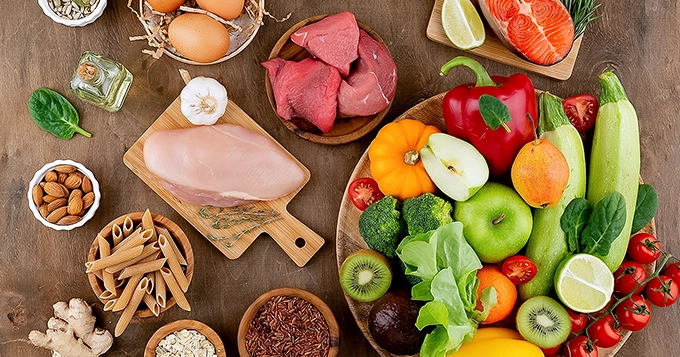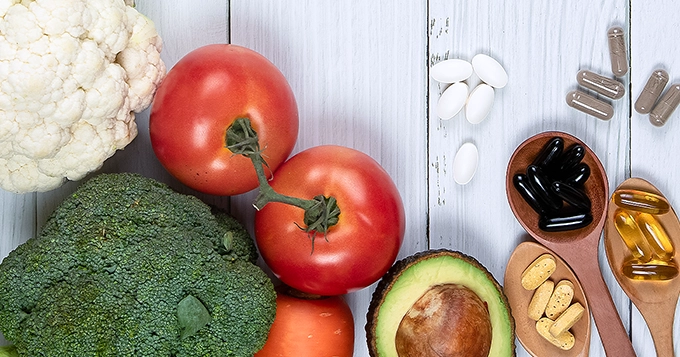Women in today’s hectic environment frequently compromise their health to balance their many duties. Amid the chaos, maintaining a balanced diet can be a game-changer, providing the energy and resilience needed to thrive. However, with the variety of female diet plans and the conflicting advice, selecting the most effective approach can be challenging.
To help women understand the essential components to improve their energy levels, manage weight, or simply feel their best, here are the key elements of successful diet plans for women.
Personalized Nutrition
Personalized nutrition is the cornerstone of any successful women’s diet plan as it takes into account the unique needs and goals of the individual. Unlike one-size-fits-all diets, personalized nutrition acknowledges that each woman’s body is different and requires a tailored approach to achieve optimal health.
Understanding Individual Needs
Every woman has a distinct biological makeup, influenced by factors such as age, genetics, lifestyle, and health status. Personalized Nutrition starts with understanding these unique characteristics. For example, a young woman in her 20s may have different nutritional requirements compared to a woman in her 50s due to variations in metabolism, hormone levels, and activity levels.
Goal-Specific Diet Plans
Personalized nutrition also considers individual goals. Whether the objective is weight loss, muscle gain, improved energy levels, or managing a health condition, a tailored diet plan can more effectively meet these goals.
Dietary Preferences and Restrictions
Another important aspect of personalized nutrition is accommodating dietary preferences and restrictions. This includes respecting cultural food practices, food allergies, and intolerances. A diet plan that aligns with a woman’s preferences and restrictions is more likely to be sustainable and enjoyable.
Nutritional Assessment
Personalized Nutrition often involves a comprehensive nutritional assessment. This can include blood tests, genetic testing, and an analysis of current eating habits. By evaluating these factors nutritionists can identify nutrient deficiencies or imbalances and develop a plan that addresses specific nutritional needs.
Adjusting For Lifestyle and Activity Levels
Women’s lifestyles and activity levels vary widely, and personalized nutrition takes these differences into account. For example, a sedentary lifestyle requires a different caloric intake compared to a highly active one. Tailoring the diet to match activity levels ensures that the body gets the right amount of energy and nutrients without excess or deficiency.
Monitoring and Adaptation
Personalized nutrition is not static; it requires continuous monitoring and adjustments. As women’s bodies change over time–whether due to aging, hormonal shifts, or changes in physical activity–their nutritional needs also evolve. Regular check-ins with a nutritionist can help tweak the diet plan to continue meeting these needs effectively.
Psychological and Behavioral Factors
It covers stress-related eating habits, emotional eating, and other behavioral aspects of eating that affect diet. Women can have a healthier relationship with food by using personalized nutrition to understand and address these behaviors.
Balanced Macronutrients
Balanced macronutrients are essential for successful diet plans for women, providing the necessary energy and nutrients for the body’s various functions. Macronutrients–carbohydrates, proteins, and fats– each play distinct roles and need to be consumed in the right proportions to support overall health and well-being.
Carbohydrates: The Body’s Primary Energy Source
Carbohydrates are the main source of energy, crucial for fueling daily activities and brain function. They are transformed into glucose, which the body can either utilize immediately for energy or store as glycogen in the muscles and liver for later use.
Proteins: The Building Blocks of the Body
Building and mending tissues, generating hormones and enzymes, and bolstering immune system function all depend on proteins. They consist of amino acids, some of which the body cannot synthesize and must obtain through nutrition.
Fats: Essential for Hormone Production and Cell Function
Fats are necessary for hormone production, cellular function, and absorption of fat-soluble vitamins (A, D, E, and K). Despite their negative reputation, fats are crucial for a balanced diet.
Optimal Macronutrient Distribution
The optimal distribution of macronutrients can vary based on individual needs and goals. A common guideline is:
- Carbohydrates: 45-65% of total daily calories
- Proteins: 10-35% of total daily calories
- Fats: 20-35% of total daily calories
Balancing Macronutrients for Women
When balancing macronutrients, women may need to take certain factors into account, such as hormonal changes that occur throughout the menstrual cycle, pregnancy, and menopause. As an example:
- During the menstrual cycle: Women may benefit from higher iron intake and complex carbs to manage energy levels.
- During pregnancy: Increased protein and healthy fats support fetal development
- Post-Menopause: Higher protein intake helps maintain muscle mass and metabolism
Micronutrients and Supplements
The body needs micronutrients, such as vitamins and minerals, for a variety of biochemical functions as well as general health. Unlike macronutrients, micronutrients are needed in smaller quantities, but their impact is significant. It might be difficult for many women to satisfy these nutritional demands through diet alone, therefore supplements are a useful addition to guarantee excellent health.
Essential Vitamins for Women
- Vitamin A: Essential for healthy skin, immune system, and eyesight.
- Vitamin C: Necessary for collagen production, antioxidant protection, and immune support.
- Vitamin D: Necessary for healthy bones, mood regulation, and immune response. Sourced from sunlight exposure, fatty fish, and fortified dairy products. Many women may require supplements, especially in regions with limited sunlight.
- Vitamin E: An antioxidant that boosts immune system performance and aids in cell damage prevention present in green leafy vegetables, nuts, and seeds.
- Vitamin K: Vital for healthy bones and blood coagulation.
- B Vitamins: Includes B6, B12, folate, and others, important for energy production, brain function, and cell metabolism. Present in meats, eggs, beans, and whole grains. For women of reproductive age, folate (also known as folic acid) is especially crucial for preventing neural tube abnormalities during pregnancy.
Essential Minerals for Women
- Calcium: Essential for healthy bones, muscles, and nerve transmission and is present in leafy greens, dairy products, and fortified plant milk. Women, especially post-menopausal, often need to ensure adequate calcium intake to prevent osteoporosis.
- Iron: Essential for blood oxygen transport and energy metabolism. present in spinach, legumes, chicken, fish, and red meat. Women need higher intake due to menstrual blood loss.
- Magnesium: Necessary for more than 300 bodily biochemical processes, including healthy bones, muscles, and nerves.
- Zinc: Enhances immune system performance, wound healing, and DNA synthesis. found in seeds, beans, pork, and seafood.
- Iodine: Necessary for thyroid function and metabolic regulation. Prevalent in dairy products, shellfish, and iodized salt.
Portion Control and Mindful Eating
These are two interconnected practices that significantly contribute to the success of a diet plan. They help manage calorie intake, improve digestion, and foster a healthier relationship with food.
Portion Control and Understanding Serving Sizes
Portion Control involves regulating the amount of food consumed in one sitting to prevent overeating and ensure caloric intake aligns with health goals. It includes recognizing appropriate serving sizes, using tools like measuring cups and food scales and employing visual cues to simplify portioning.
Practical methods include dividing your plate into sections for vegetables, proteins, and grains, and using mindful eating techniques.
Mindful Eating
It involves eating with all of your senses engaged and present. It entails observing the sensory aspects of eating and identifying bodily cues that indicate hunger and fullness. You can avoid overeating and enhance digestion by eating thoughtfully and paying attention to your hunger and fullness signs. You can also appreciate the meal more as you concentrate on its flavors, textures, and aromas.
Combining portion control and mindful eating can create a powerful synergy for achieving dietary goals by ensuring the right amount and quality of food is consumed. This synergy helps maintain a balanced diet, supports weight management, and fosters a healthier relationship with food, making it easier to develop sustainable eating habits that promote long-term health and well-being.
Hydration
Digestion, nutrition absorption, temperature regulation, and joint lubrication all require water. Staying hydrated can be achieved by drinking water throughout the day and consuming foods with high water content like fruits and vegetables. Although it’s typically advised to have 8 glasses, or 2 liters, of water each day, each person’s requirements will differ depending on their activity level, the environment, and their general health.
Regular Physical Activity
It is vital for supporting weight management, cardiovascular health, and muscle and bone strength. Regular physical activity enhances flexibility, balance, and energy levels while improving mood, cognitive function, and sleep quality. Incorporating a mi of aerobic exercise, strength training, flexibility, and balance activities into daily routines helps achieve these benefits.
Setting realistic goals such as time constraints and physical limitations is essential for making regular exercise a sustainable habit.
Behavioral and Lifestyle Changes
It involves adopting healthier habits and routines to support long-term well-being. Among the deliberate choices that fit under this category are maintaining a healthy diet, getting regular exercise, getting enough sleep, managing stress, and giving up harmful habits like smoking and excessive drinking. Consistency and a supportive environment are important for sustaining these changes over time.








